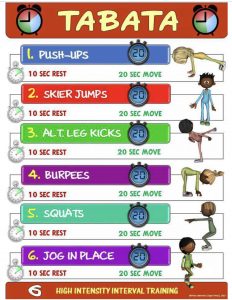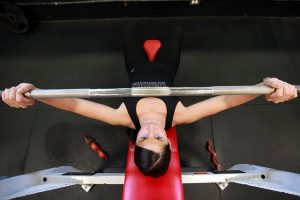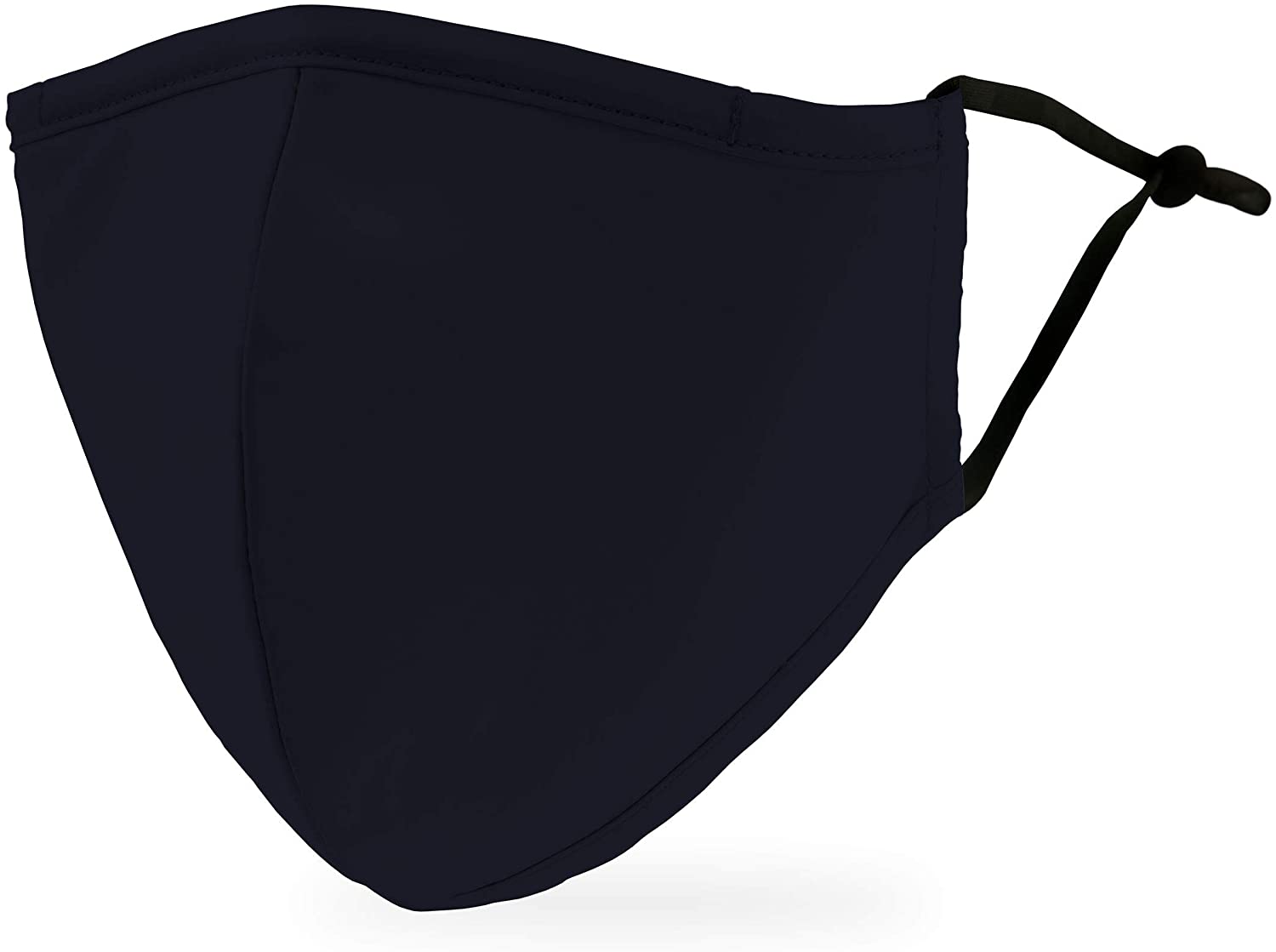-
Table of Contents
Wearable technology.
Wearable technology was again the no. 1 trend as it has been since 2016 (the only exception was a drop to no. 3 in 2018) and includes fitness trackers, smartwatches, HR monitors, and GPS tracking devices. Examples include fitness and activity trackers like those manufactured by Fitbit®, Samsung Gear Fit2®, Misfit®, Garmin®, and Apple®. These devices can track HR, calories, sitting time, and much more. While there was some question of accuracy, these issues have seemed to be resolved well enough. Wearable technology has been estimated to be about a $95 billion industry.

-
High-intensity interval training (HIIT).

These exercise programs typically involve short bursts of high-intensity bouts of exercise followed by a short period of rest. While a part of the survey as a possible trend in previous years but not making the top 20, HIIT was no. 1 in the survey for 2014 and 2018 (dropped to no. 3 in 2016 and 2017) and has been in the top 5 between 2014 and 2020. Although there are several commercial club examples of HIIT, all emphasize higher intensities (above 90%) of maximum during the increased intensity segments followed by periods of rest and recovery. Despite warnings by some fitness professionals of potentially increased injury rates using HIIT, this form of exercise has been popular in gyms all over the world.
-
Group training.

Defined as more than five participants, group exercise instructors teach, lead, and motivate individuals through intentionally designed larger in-person group movement classes. Group classes are designed to be effective, motivational sessions for different fitness levels with instructors teaching many types of classes and equipment, from cardio-based classes and indoor cycling to dance-based classes to step classes. Group exercise training programs have been around for a long time and have appeared as a potential worldwide trend since this survey was originally constructed. However, it was only in 2017 that group exercise training made the top 20, appearing at no. 6 followed by no. 2 in the 2018 and 2019 surveys, respectively. For 2020, group training fell slightly to no. 3.
-
Training with free weights.
 Previous surveys included a category described as “strength training.” Determined to be too broad a category, strength training was dropped in favor of the more specific free weight training. Free weights, barbells, kettlebells, dumbbells, and medicine ball classes do not just incorporate barbells into another functional class or activity. Instructors start by teaching proper form for each exercise and then progressively increase the resistance once the correct form is accomplished. New exercises are added periodically, and those begin at the form or movement level. Training with free weights debuts at no. 4 in 2020.
Previous surveys included a category described as “strength training.” Determined to be too broad a category, strength training was dropped in favor of the more specific free weight training. Free weights, barbells, kettlebells, dumbbells, and medicine ball classes do not just incorporate barbells into another functional class or activity. Instructors start by teaching proper form for each exercise and then progressively increase the resistance once the correct form is accomplished. New exercises are added periodically, and those begin at the form or movement level. Training with free weights debuts at no. 4 in 2020. -
Personal training.

One-on-one training continues to be a trend as the profession of personal training becomes more accessible online, in health clubs, in the home, and in worksites that have fitness facilities. Personal training includes fitness testing and goal setting with the trainer working one on one with a client to prescribe workouts specific to clients’ individual needs and goals. Since this survey was first published in 2006 (1), personal training has been a top 10 trend. Personal training was no. 9 in 2017 and was no. 8 in 2018 and 2019.
-
Exercise is Medicine®.
Exercise is Medicine® (EIM) is a global health initiative that focuses on encouraging primary care physicians and other health-care providers to include physical activity assessment and associated treatment recommendations as part of every patient visit, and referring their patients to exercise professionals. In addition, EIM recognizes fitness professionals as part of the health-care team in their local communities. EIM was the no. 7 trend in 2017, no. 12 in 2018, no. 10 in 2019, and jumping to no. 6 in 2020.
-
Bodyweight training.

Using a combination of variable resistance bodyweight training and neuromotor movements employing multiple planes of movement, this program is all about using bodyweight as the training modality. Bodyweight training uses minimal equipment, which makes it an inexpensive way to exercise effectively. Bodyweight training appeared for the first time in the trends survey in 2013 (at no. 3) and was in the no. 2 positions in 2017, no. 4 in 2018, and no. 5 in 2019. Bodyweight training did not appear as a survey trend option before 2013 because it only became popular (as a defined trend) in gyms around the world over the last few years.
-
Fitness programs for older adults.
This trend continues to stress the fitness needs of the Baby Boom and older generations. These individuals in general have more discretionary money than their younger counterparts do, and fitness clubs may be able to capitalize on this growing market. People are living longer, working longer, and remaining healthy and active much longer. This trend is making a strong return after being in the top 10 since 2007 (when it was the no. 2 trend) and dropping to no. 11 in 2017. It was the no. 9 trend in 2018 and no. 4 in 2019.
-
Health/wellness coaching.

This is a growing trend to integrate behavioral science into health promotion and lifestyle medicine programs. Health/Wellness coaching uses a one-on-one (and at times small group) approach with the coach providing support, goal setting, guidance, and encouragement. The health/wellness coach focuses on the client’s values, needs, vision, and short- and long-term goals using behavior change intervention strategies. Previous surveys included wellness coaching, but for the 2019 survey, the term “health” was added, which better describes the trend. Wellness coaching has been in the top 20 trends since 2010 and was listed as no. 17 in 2014, no. 13 in 2015, no. 13 in 2016, no. 15 in 2017, no. 18 in 2018, and no. 11 in 2019.
-
Employing certified fitness professionals.

Debuting last year as the no. 6 trends, the importance of hiring certified health fitness professionals through educational programs and certification programs that are fully accredited for health fitness professionals is fast becoming a trend. More certification programs have become accredited by the National Commission for Certifying Agencies, allowing employers easy access to certification validation through the U.S. Registry of Exercise Professionals. Employing certified fitness professionals was a new survey item for 2019, replacing “Educated, certified, and experienced fitness professionals,” which was determined to be too broadly defined as a survey item.
-
Exercise for weight loss.
Most diet programs incorporate some kind of exercise program into the daily routine of caloric restriction adding the caloric expenditure of physical activity. Exercise for weight loss programs has been a top 20 trend since the survey began. In 2009, exercise for weight loss ranked no. 18, moving to no. 12 in 2010, no. 7 in 2011, no. 4 in 2012, and no. 5 in 2013. In 2014, this trend was ranked no. 6 and remained at no. 6 in 2015. Exercise for weight loss was no. 9 in the 2016 survey and no. 10 in the 2017 survey. It was the no. 11 trend in 2018 and no. 12 in 2019.
-
Functional fitness training.

This is a trend toward using strength training to improve balance, coordination, muscular strength, and endurance to improve activities of daily living typically for older adults but also in clinical populations. Replicating actual physical activities someone might do as a function of their daily routine, functional fitness first appeared on the survey in the no. 4 positions in 2007 but fell to no. 8 in 2008 and no. 11 in 2009. It reappeared in the top 10 in 2010 at no. 7 and in 2011 at no. 9. Functional fitness was no. 10 in 2012, no. 8 in 2013 and 2014, no. 9 in 2015, no. 7 in 2016, no. 12 in 2017, no. 10 in 2018, and no. 9 in 2019.
-
Outdoor activities.

More outdoor activities such as group walks, group rides, or organized hiking groups are becoming popular. They can be short events, daylong events, or planned weeklong hiking excursions. Participants often meet in a local park, hiking area, or on a bike trail typically with a leader. This trend for health and fitness professionals to offer outdoor activities for their clients began in 2010. In that year, the trend of outdoor activities was no. 25 in the annual survey, and in 2011, it ranked no. 27. This trend was no. 14 in 2012, no. 13 in 2013, no. 14 in 2014, no. 12 in 2015, no. 14 in 2016, no. 13 in 2017, no. 14 in 2018, and no. 17 in 2019.
-
Yoga.

Yoga has taken on a variety of forms in the past (including Power Yoga, Yogilates, yoga in hot environments, and many others). On-demand videos and books are plentiful, as are certifications in the many yoga formats. Yoga first appeared in the top 10 in this survey in 2008, fell out of the top 20 in 2009, but made a great comeback in 2010 (no. 14) and 2011 surveys (no. 11). In 2012, yoga was no. 11 on the list, falling to no. 14 in 2013 and up to no. 7 in 2015. In 2017, it ranked no. 8 after occupying the no. 7 spots in 2015 and no. 10 in 2016. Yoga was ranked no. 7 in 2018 and 2019.
-
Licensure for fitness professionals.
There are some professions in the United States and around the world that are regulated by local, state, or national licensure. For example, people cannot call themselves a medical doctor or nurse or, in most states, a physical therapist or dietitian, without holding a license. This is a trend in the fitness industry to pursue regulation of fitness professionals such as personal trainers and exercise physiologists. Licensure for fitness professionals first appeared as a fitness trend in 2018 when it was ranked no. 16 and then no. 18 in 2019.
-
Lifestyle medicine.
Lifestyle medicine is the evidence-based practice of helping individuals and families adopt and sustain healthy behaviors that affect health and quality of life. Examples of target patient behaviors include, but are not limited to, eliminating tobacco use, improving diet, increasing physical activity, and moderating alcohol consumption. Lifestyle medicine promotes healthy behaviors as the foundation for medical care, disease prevention, and health promotion. Lifestyle medicine debuts for the first time in the fitness trends survey at no. 16.
-
Circuit training.

Circuit training appeared for the first time in the top 20 trends at no. 18 in 2013, and it occupied the no. 14 positions in 2015, up from no. 15 in 2014. It was trend no. 18 in 2016 and no. 19 in 2017, improving to no. 17 in 2018 but dropping again to no. 21 in 2019. Some respondents pointed out that circuit training is similar to HIIT, but at a much lower or even moderate intensity (some have called this moderate-intensity interval training). Circuit training is typically a group of about 10 exercises that are completed in succession and in a predetermined sequence. Each exercise is performed for a specified number of repetitions or for a set time period before having a quick rest and moving on to the next exercise. Circuit weight training has dated back to 1953, but it is impossible to determine exactly when and under what circumstances it was first developed.
-
Worksite health promotion and workplace well-being programs.
This is a trend toward a range of programs and services provided by employers to improve the health and wellness of workers integrated with systems to support the evaluation of and reporting on the effect on health, costs, and productivity. Programs are generally on-site or with a local gym. Previous surveys restricted this trend to worksite health promotion. For the 2019 survey, workplace well-being programs were added to the description. Worksite health promotion was the no. 16 trend in 2017 before dropping out of the top 20 in 2018 but improving to no. 15 in 2019.
-
Outcome measurements.

There are efforts to define, track, and report outcomes leading to the accountability of both the health club member and the trainer. Measurements are necessary to determine the benefits of health and fitness programs in disease management and to document success in changing negative lifestyle habits. The proliferation of technology aids in data collection to support these efforts. The trend outcome measurements were no. 21 in 2018 and no. 16 in 2019.
-
Children and exercise.

Children and exercise for the treatment/prevention of obesity dropped out of the top 20 in 2016 and 2017 and was no. 32 in 2018 and no. 28 in 2019. Demonstrating the biggest decrease in the survey, dropping from the top 5 in every survey between 2007 and 2013, and appearing at no. 11 in 2014 and no. 17 in 2015, was exercise programs specifically aimed at children and weight loss. Childhood and adolescent obesity continues to be a major health issue in most developed and developing nations and is important because of its association with other medical issues such as diabetes and hypertension. Health clubs around the world may find this to be a new potential source of revenue.
AllerTech Adjustable Arctic Fleece Winter Cold Weather Mask, Effective in Sub-Zero Temperatures, Gray
BREATHE EASIER THROUGH SUB-ZERO TEMPERATURES. This effective AllerTech cold weather mask will help you breathe through the winter chill. It is specially design to withstand sub-zero temperatures and harsh wind chills.
MADE FROM DURABLE ARCTIC FLEECE. No matter how cold and dry the air may be, this arctic fleece mask is enhanced with a cotton/polyester particle filtering lining that warms the air you inhale.
GREAT FOR THE ENTIRE WINTER SEASON. Whether you are walking on your morning commute, hiking through the mountains or shoveling your driveway, this cold weather mask protects your face from the chill of the winter cold.Buy NowPrice: $90.06
Spoga Premium 5/8-Inch Extra Thick 71-Inch Long High Density Exercise Yoga Mat with Comfort Foam and Carrying Straps
71" long 24" wide yoga mat ensures comfort for people of all shapes and sizes
Ultra thick mat with specially designed Spoga memory foam protects your knees and joints, absorbs impact, and provides amazing comfort while still allowing you to grip the floor for balance
Includes a self-strapping System featuring two elastic straps connected by a handle, offering an effective System for keeping the mat neatly rolled up and easy Transport and storageBuy NowPrice: $48.36
References:
. Thompson WR. A worldwide survey reveals fitness trends for 2007. ACSMs Health Fit J. 2006;10(6):8–14.
2. Thompson WR. A worldwide survey reveals fitness trends for 2008. ACSMs Health Fit J. 2007;11(6):7–13.
3. Thompson WR. A worldwide survey reveals fitness trends for 2009. ACSMs Health Fit J. 2008;12(6):7–14.
4. Thompson WR. A worldwide survey reveals fitness trends for 2010. ACSMs Health Fit J. 2009;13(6):9–16.
5. Thompson WR. A worldwide survey reveals fitness trends for 2011. ACSMs Health Fit J. 2010;14(6):8–17.
6. Thompson WR. A worldwide survey reveals fitness trends for 2012. ACSMs Health Fit J. 2011;15(6):9–18.
7. Thompson WR. A worldwide survey reveals fitness trends for 2013. ACSMs Health Fit J. 2012;6(6):8–17.
8. Thompson WR. Now trending: a worldwide survey of fitness trends for 2014. ACSMs Health Fit J. 2013;17(6):10–20.
9. Thompson WR. A worldwide survey of fitness trends for 2015: What’s Driving the Market. ACSMs Health Fit J. 2014;18(6):8–17.
10. Thompson WR. A worldwide survey of fitness trends for 2016: 10th Anniversary Edition. ACSMs Health Fit J. 2015;19(6):9–18.
11. Thompson WR. A worldwide survey of fitness trends for 2017. ACSMs Health Fit J. 2016;20(6):8–17.
12. Thompson WR. A worldwide survey of fitness trends for 2018: The CREP Edition. ACSMs Health Fit J. 2017;21(6):10–9.
13. Thompson WR. A worldwide survey of fitness trends for 2019. ACSMs Health Fit J. 2018;22(6):10–7.
https://journals.lww.com/acsm-healthfitness/Fulltext/2019/11000/WORLDWIDE_SURVEY_OF_FITNESS_TRENDS_FOR_2020.6.aspx?WT.mc_id=HPxADx20100319xMP

















